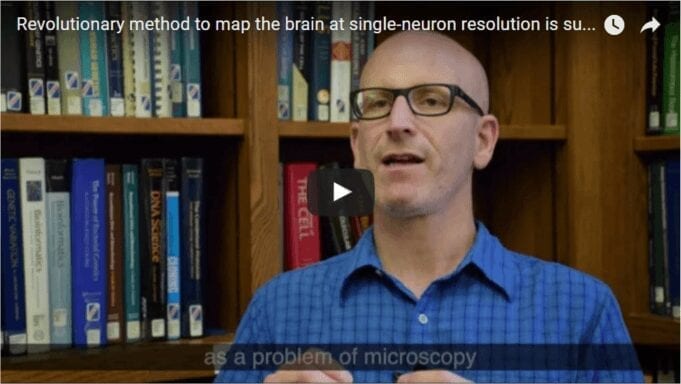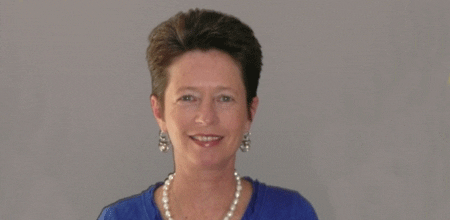
Neither quantum computers nor quantum cryptography will become prevalent technologies without memory systems able to manipulate quantum information easily and effectively.
The Faculty of Physics at the University of Warsaw has recently made inroads into popularizing quantum information technologies by creating an atomic memory with outstanding parameters and an extremely simple construction.
Following years of tests in physics laboratories, the first quantum technologies are slowly emerging into wider applications. One example is quantum cryptography – an encryption method providing an almost full guarantee of secure data transmission, currently being introduced by military forces and banking institutions. Processing quantum information and sending it over long distances has so far been severely limited due to a lack of adequate memories. A solution is now within reach: the Faculty of Physics at the University of Warsaw (FUW), Poland, has created a fully-functioning atomic memory with a simple, reliable construction and numerous potential applications, including in telecommunications.
“The greatest challenge in the construction of our quantum memory was the precise selection of system parameters that would allow it to save, store and read quantum information effectively. We have also found a novel way of reducing noise during detection,” says Dr. Wojciech Wasilewski (FUW).
Contemporary fiber-optic communications involve the transmission of classical information using laser light propagated inside optical fiber cables. Attenuation causes the light signal in the optical fiber cable to weaken as the distance it travels increases. When long optical fiber cables are used, laser amplifiers multiplicating photons are placed along them at intervals of approximately 100 km. These turn a weak signal comprising a low number of photons into a strong signal with high numbers of photons.
However, in quantum communications it is the individual photons and their quantum states that are important. Here signal amplification of the signal does not simply mean increasing the number of photons, but rather preserving their original, undisturbed quantum states. Unfortunately, quantum information cannot be duplicated with impunity: performing any measurement of the quantum state of the photon will inevitably affect its original state. The impossibility of quantum cloning, co-discovered by the Polish physicist Prof. Wojciech ?urek, places fundamental limitations on the operations that can be conducted on quantum information.
In 2001, a team of physicists from the University of Innsbruck and Harvard University proposed the DLCZ quantum transmission protocol, making it possible to send quantum information over long distances. Under this protocol, quantum information reaching each relay point along the channel must be stored there for a sufficiently long time to ensure that attempts at transmitting it to the next node are successful, as confirmed via a normal signal. In such a protocol, therefore, a key role is played by quantum memory in which quantum information needs to be stored for a sufficiently long time.
“Until now, quantum memory required highly sophisticated laboratory equipment and complex techniques chilling the systems to extremely low temperatures approaching absolute zero. The atomic memory device we have been able to create operates at far higher temperatures, in the region of tens of degrees Celsius, which are significantly easier to maintain,” notes Radek Chrapkiewicz, doctoral student at the Faculty and co-author of the paper in the renowned journal Optics Express.
The Latest on: Quantum communications
[google_news title=”” keyword=”Quantum communications” num_posts=”10″ blurb_length=”0″ show_thumb=”left”]
via Google News
The Latest on: Quantum communications
- Swiss startup unveils post-quantum cryptography library for devson May 8, 2024 at 5:00 am
Swiss startup Terra Quantum has released an open-source repository for quantum-resistant encryption algorithms.
- Quantum Systems unveils new Reliant UASon May 8, 2024 at 4:01 am
UAS company Quantum Systems has expanded its range of platforms by introducing the Reliant long-range vertical take-off and landing (VTOL) UAS at the Special Operations Forces (SO ...
- World’s Purest Silicon Brings Scientists One Step Closer to Scaling Up Quantum Computerson May 8, 2024 at 2:08 am
More than 100 years ago, scientists at The University of Manchester changed the world when they discovered the nucleus in atoms, marking the birth of nuclear physics.
- Toshiba, PacketLight Showcase Quantum Key Distribution over DWDM Technologyon May 7, 2024 at 11:17 pm
PacketLight Networks, a leading provider of DWDM and OTN equipment, has successfully demonstrated quantum key distribution (QKD) over DWDM links with Toshiba Digital Solutions Corporation (Toshiba), a ...
- nodeQ Launches PQtunnel: The Leading-Edge Cybersecurity Solution for Quantum-Safe Communicationon May 7, 2024 at 2:52 pm
The latest application developed by nodeQ simplifies the migration to Post-Quantum Cryptography for both SMEs and large enterprises YORK, England, May 7, 2024 /PRNewswire/ -- The advent ...
- US deploys commerce and communications against cyber threats, Blinken sayson May 7, 2024 at 1:38 pm
The US government is moving to address the challenges of quantum computing, cloud strategies, and generative AI, Anthony Blinken said in a speech that was light on specifics.
- nodeQ Launches PQtunnelTM: The Leading-Edge Cybersecurity Solution for Quantum-Safe Communicationon May 7, 2024 at 10:26 am
The advent of Quantum Computing poses a significant threat to existing public-key cryptosystems. A large quantum computer can break algorithms like RSA or ECDH, which form the backbone of current ...
- Future Proof Encryption: Embracing Post-Quantum Cryptography For Quantum-Resilient Solutionson May 7, 2024 at 5:45 am
Let's look at how computing technology could challenge today's encryption protocols and the potential ways to secure ourselves.
- New super-pure silicon chip opens path to powerful quantum computerson May 7, 2024 at 2:00 am
Researchers at the Universities of Melbourne and Manchester have invented a breakthrough technique for manufacturing highly purified silicon that brings powerful quantum computers a big step closer.
- 'World's purest silicon' could lead to 1st million-qubit quantum computing chipson May 6, 2024 at 4:59 pm
The largest quantum computer today has roughly 1,000 qubits ... But in a new study, published May 7 in the journal Nature Communications Materials, researchers proposed using a new, pure form of ...
via Bing News










